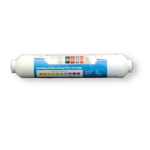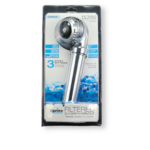FACTS ABOUT WATER FILTERS
Over the past 20 years, water filters have become a ‘must have’ appliance as customers become more and more aware of the health concerns with ingestion of chlorine, more specifically Fluoride. Allergies and chemical sensitives have all contributed to the desire to have good tasting safe water. This, together with environmental issues concerning the disposal of plastic bottles, the cost of bottled water, as well as the convenience of having ‘point of use’ filtered water is also a contributing factor. Here is some additional information that you may find interesting. http://www.allaboutwater.org/water-filter.html
- In order to capitalize on the health benefits of water, it is essential to draw from a clean source of water.
- Drinking impure, contaminated water is the leading cause of epidemic disease in developing countries.
- There are more than 2100 known drinking water contaminants that may be present in tap water, including several known poisons.
- Bottled water does not offer a viable alternative to tap water
- Municipal water treatment facilities cannot always control for the outbreak of dangerous bacterial contaminants in tap water.
- The only way to ensure pure, contaminant-free drinking water is through the use of a point-of-use filtration system.
- Several types of cancer can be attributed to the presence of toxic materials in drinking water.
- Clean, healthy drinking water is essential to a child’s proper mental and physical development.
- According to the EPA, lead in drinking water contributes to 480,000 cases of learning disorders in children each year in the United States alone.
- It is especially important for pregnant women to drink pure water as lead in drinking water can cause severe birth defects
THE BASICS OF WATER FILTRATION
Contaminants and removal options.
- Chlorine, Giardia & Cryptosporidium parasites, pesticide residue and sediment – CARBON FILTRATION
- Lead, Heavy Metals including Copper, Zinc etc. – ION EXCHANGE
- Bacteria, and some heavy metals – CERAMIC
- Minerals, Chemicals and Heavy Metals, Bacteria – DISTILLATION
- Fluoride, all minerals including Aluminium, Mercury, Bacteria and Chemicals – REVERSE OSMOSIS
CARBON
This is the minimum filtration consumers should consider. Chlorine is a bleach and is considered carcinogenic and detrimental to our health. The effectiveness of carbon is dependent on the micron rating of the carbon cartridge.
Cartridges have an absolute and nominal micron rating, however, most sellers use only a nominal rating to eliminate confusion e.g. a 1 micron absolute is referred to as 0.5 micron nominal. Since the late 90’s when Sydney had the Giardia parasite scare, any form of single or carbon filtration should incorporate a minimum of 0.5 micron for the carbon component.
Twin systems also include a 1 micron pre-filter to remove sediment etc. Coconut carbon as the source of carbon as against coal based carbon is also available and offers a more natural source of carbon to eliminate the leaching of phosphates associated with coal based carbon.
CARBON LIFE – Cartridges should be changed annually, irrespective of use. WHY – carbon if looked at under a microscope is like honeycomb and as contaminants including sediment etc. are trapped within the carbon, a slimy biofilm is produced as the carbon breaks down. You will often see this biofilm on the ends of cartridges even at 12 months use. Carbon use is improved with volume use as the continued flow of chlorinated water assists in the prevention of bacteria and contaminant build-up .
CERAMIC
Mainly used for bacteria removal and where copper is a concern. An expensive cartridge, Doulton UK made a nominal micron rating of 0.2 micron. Construction is a ceramic composition for low pressure, – Stersyl, and a ceramic/carbon/ion exchange combination for bacteria, copper and taste and odour. The ceramic outer skin can be scrubbed regularly to maintain flow rate. An alternative to Ultra Violet filtration when bacteria ia a concern.
The special blend of carbon in the centre of the Doulton Ultra Carb will remove Algae, Aluminium, Ammonia, Cadmium, Chlorine, Chloroform, Cryptosporidium, Giardia, Heavy Metals, Lead, Mercury, Pesticides and Herbicides, Rust and Dirt.
The incorporation of silver locked within the ceramic structure inhibits the growth of bacteria and gives the cartridge enhanced bacteriostatic and self-sterilising properties
ION EXCHANGE – RESIN
This is a mixture of negative and positively charged resin beads that bond with minerals and hold them within the cartridge, removing them from the drinking water. This method was used in the early nineties as an option to remove fluoride and heavy metals, however it has limitations in that it becomes saturated very quickly and can dump contaminants back into the water supply. The resin beads also tend to sweat and can impart a fishy taste to water.
This technology was popular prior to the affordability of reverse osmosis for removing Fluoride. Limitations are that a standard 10″ cartridge, if used primarily for mineral removal will last approx 800 litres.
DISTILLATION
This method involves boiling the water then condensing back to a liquid, minus any minerals and contaminants. Personally not recommended as this water can be very aggressive and leach minerals from your teeth or tissue.
REVERSE OSMOSIS
The most effective and economical means to remove Fluoride, minerals, bacteria and all contaminants from the water. The membrane process forces water molecules to separate producing pure and waste water. This ratio is close to 1:1 with any waste water able to be used on either gardens or for washing.
Reverse Osmosis takes out approx. 99% of minerals leaving a small amount in the water to ensure healthy water. Zero TDS (total dissolved solids) which is the determination of purity in water, can be very aggressive and not recommended.
With reverse Osmosis the main component is the membrane and all other stages either take contaminants out such as sediment and chlorine, with pre-filters and can also include a final polishing carbon filter to ensure an excellent taste profile. This can be done with a 4 stage unit, with any additional cartridges adding important minerals and oxygen back into the water. Consumers should be aware that 5 – 6 stage filters for filtering only is an over-supply and extremely costly for cartridge replacement without any benefit.
MEMBRANE FLUSHING SERVICE MODE.. Puregold reverse osmosis offers this addition as an optional extra to ensure your membrane maintains its purity as long as possible. This requires a simple turn of a small handle on a valve to allow water to flush out any build of impurities trapped within the membrane.



